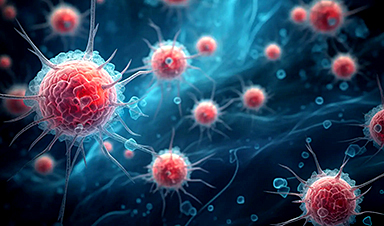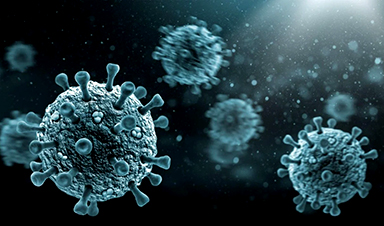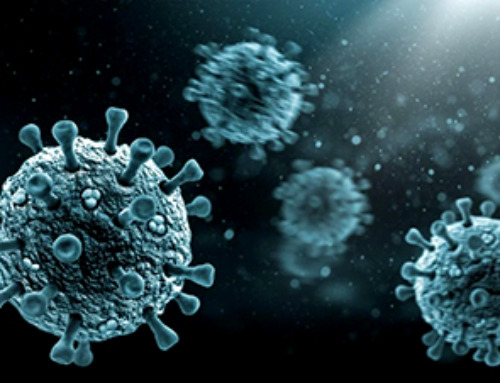An MD Anderson study provides a deeper understanding of the progression of gastric cancer and highlights a potential therapeutic target.
A recent study conducted by scientists at The University of Texas MD Anderson Cancer Center offers new insight into how the tumor microenvironment changes during the development of gastric cancer. Highlights of the study, published in Cancer Cell, include a connection between multicellular communities and patient outcomes, as well as a promising new target for therapy.
Gastric adenocarcinoma ranks among the deadliest cancers worldwide, primarily due to its natural resistance to treatment. However, the cellular and molecular processes that drive the transition from early pre-cancerous stages to tumor formation and metastasis remain largely unclear. This study illuminates the ways in which different immune and stromal cell subsets change throughout the progression of gastric cancer.

Linghua Wang, M.D., Ph.D. Credit: MD Anderson Cancer Center
The study was conducted by Linghua Wang, M.D., Ph.D., associate professor of Genomic Medicine, in collaboration with Jaffer Ajani, M.D., professor of Gastrointestinal Medical Oncology, and Ruiping Wang, Ph.D., postdoctoral fellow in the Wang Lab.
By obtaining single-cell RNA sequencing (scRNA-seq) data from 68 gastric adenocarcinoma samples encompassing various disease stages — including precancerous lesions, localized tumors, and distant metastases — along with normal tissue and peripheral blood samples, the team characterized the diverse immune and stromal cell populations within the tumor microenvironment and discovered exploitable targets to modulate the tumor microenvironment.
A novel approach allows researchers to dissect the complex tumor microenvironment
Various immune and stromal cell subsets formed multicellular communities, or collections of cell states, present in the tumor microenvironment of an individual tumor sample. The research team termed these groups “ecotypes” and identified six unique ecotypes, with each dominated by specific immune and stromal cell states.
“While many published single-cell studies have focused on characterizing the heterogeneity of each individual cell compartment, our study utilized a novel approach and concept of integrating various components of the tumor microenvironment to define ecotypes and investigated their clinical significance,” Wang said. “This approach can readily be applied to studies in other cancer types.”
A notable discovery is that two ecotypes (EC3 and EC6) correlated with different histological, genomic, and clinical features of primary gastric adenocarcinomas. Tumors categorized as EC3 were composed mainly of immune cell subsets, whereas EC6 tumors predominantly included stromal cell subsets. Patients with EC6 tumors had more aggressive disease and significantly shorter survival compared to those with EC3 tumors.
Findings point to SDC2 as a potential therapeutic target in stromal cells
While stromal components within the tumor microenvironment play crucial roles in tumor initiation, progression, and metastases, cancer treatment strategies have thus far rarely focused on modulating stromal components, especially in patients with gastric adenocarcinoma.
This study identified SDC2 as a potential target worthy of further investigation. Researchers found SDC2 overexpression in stromal cells, especially in cancer-associated fibroblasts, was correlated with aggressive disease and advanced stages, and strongly associated with unfavorable survival outcomes. In addition, SDC2 expression was consistently elevated in stromal cells across various other cancer types, including pancreatic cancer, colorectal cancer, bladder cancer, breast cancer, and clear cell renal cell carcinoma.
“There are unmet needs for patients with gastric adenocarcinoma every step of the way in their clinical journey,” Ajani said. “Our team strives to use novel interrogations to discover new therapeutic targets to improve the outcomes of these patients. While there are many questions left to answer, targeting SDC2 in cancer-associated fibroblasts represents a potentially exciting avenue that warrants further investigation.”
Reference: “Evolution of immune and stromal cell states and ecotypes during gastric adenocarcinoma progression” by Ruiping Wang, Shumei Song, Jiangjiang Qin, Katsuhiro Yoshimura, Fuduan Peng, Yanshuo Chu, Yuan Li, Yibo Fan, Jiankang Jin, Minghao Dang, Enyu Dai, Guangsheng Pei, Guangchun Han, Dapeng Hao, Yating Li, Deyali Chatterjee, Kazuto Harada, Melissa Pool Pizzi, Ailing W. Scott, Ghia Tatlonghari and Linghua Wang, 6 July 2023, Cancer Cell.
DOI: 10.1016/j.ccell.2023.06.005
News
Global Nanomaterial Regulation: A Country-by-Country Comparison
Nanomaterials are materials with at least one dimension smaller than 100 nanometres (about 100,000 times thinner than a human hair). Because of their tiny size, they have unique properties that can be useful in [...]
Pandemic Potential: Scientists Discover 3 Hotspots of Deadly Emerging Disease in the US
Virginia Tech researchers discovered six new rodent carriers of hantavirus and identified U.S. hotspots, highlighting the virus’s adaptability and the impact of climate and ecology on its spread. Hantavirus recently drew public attention following reports [...]
Studies detail high rates of long COVID among healthcare, dental workers
Researchers have estimated approximately 8% of Americas have ever experienced long COVID, or lasting symptoms, following an acute COVID-19 infection. Now two recent international studies suggest that the percentage is much higher among healthcare workers [...]
Melting Arctic Ice May Unleash Ancient Deadly Diseases, Scientists Warn
Melting Arctic ice increases human and animal interactions, raising the risk of infectious disease spread. Researchers urge early intervention and surveillance. Climate change is opening new pathways for the spread of infectious diseases such [...]
Scientists May Have Found a Secret Weapon To Stop Pancreatic Cancer Before It Starts
Researchers at Cold Spring Harbor Laboratory have found that blocking the FGFR2 and EGFR genes can stop early-stage pancreatic cancer from progressing, offering a promising path toward prevention. Pancreatic cancer is expected to become [...]
Breakthrough Drug Restores Vision: Researchers Successfully Reverse Retinal Damage
Blocking the PROX1 protein allowed KAIST researchers to regenerate damaged retinas and restore vision in mice. Vision is one of the most important human senses, yet more than 300 million people around the world are at [...]
Differentiating cancerous and healthy cells through motion analysis
Researchers from Tokyo Metropolitan University have found that the motion of unlabeled cells can be used to tell whether they are cancerous or healthy. They observed malignant fibrosarcoma [...]
This Tiny Cellular Gate Could Be the Key to Curing Cancer – And Regrowing Hair
After more than five decades of mystery, scientists have finally unveiled the detailed structure and function of a long-theorized molecular machine in our mitochondria — the mitochondrial pyruvate carrier. This microscopic gatekeeper controls how [...]
Unlocking Vision’s Secrets: Researchers Reveal 3D Structure of Key Eye Protein
Researchers have uncovered the 3D structure of RBP3, a key protein in vision, revealing how it transports retinoids and fatty acids and how its dysfunction may lead to retinal diseases. Proteins play a critical [...]
5 Key Facts About Nanoplastics and How They Affect the Human Body
Nanoplastics are typically defined as plastic particles smaller than 1000 nanometers. These particles are increasingly being detected in human tissues: they can bypass biological barriers, accumulate in organs, and may influence health in ways [...]
Measles Is Back: Doctors Warn of Dangerous Surge Across the U.S.
Parents are encouraged to contact their pediatrician if their child has been exposed to measles or is showing symptoms. Pediatric infectious disease experts are emphasizing the critical importance of measles vaccination, as the highly [...]
AI at the Speed of Light: How Silicon Photonics Are Reinventing Hardware
A cutting-edge AI acceleration platform powered by light rather than electricity could revolutionize how AI is trained and deployed. Using photonic integrated circuits made from advanced III-V semiconductors, researchers have developed a system that vastly [...]
A Grain of Brain, 523 Million Synapses, Most Complicated Neuroscience Experiment Ever Attempted
A team of over 150 scientists has achieved what once seemed impossible: a complete wiring and activity map of a tiny section of a mammalian brain. This feat, part of the MICrONS Project, rivals [...]
The Secret “Radar” Bacteria Use To Outsmart Their Enemies
A chemical radar allows bacteria to sense and eliminate predators. Investigating how microorganisms communicate deepens our understanding of the complex ecological interactions that shape our environment is an area of key focus for the [...]
Psychologists explore ethical issues associated with human-AI relationships
It's becoming increasingly commonplace for people to develop intimate, long-term relationships with artificial intelligence (AI) technologies. At their extreme, people have "married" their AI companions in non-legally binding ceremonies, and at least two people [...]
When You Lose Weight, Where Does It Actually Go?
Most health professionals lack a clear understanding of how body fat is lost, often subscribing to misconceptions like fat converting to energy or muscle. The truth is, fat is actually broken down into carbon [...]





















